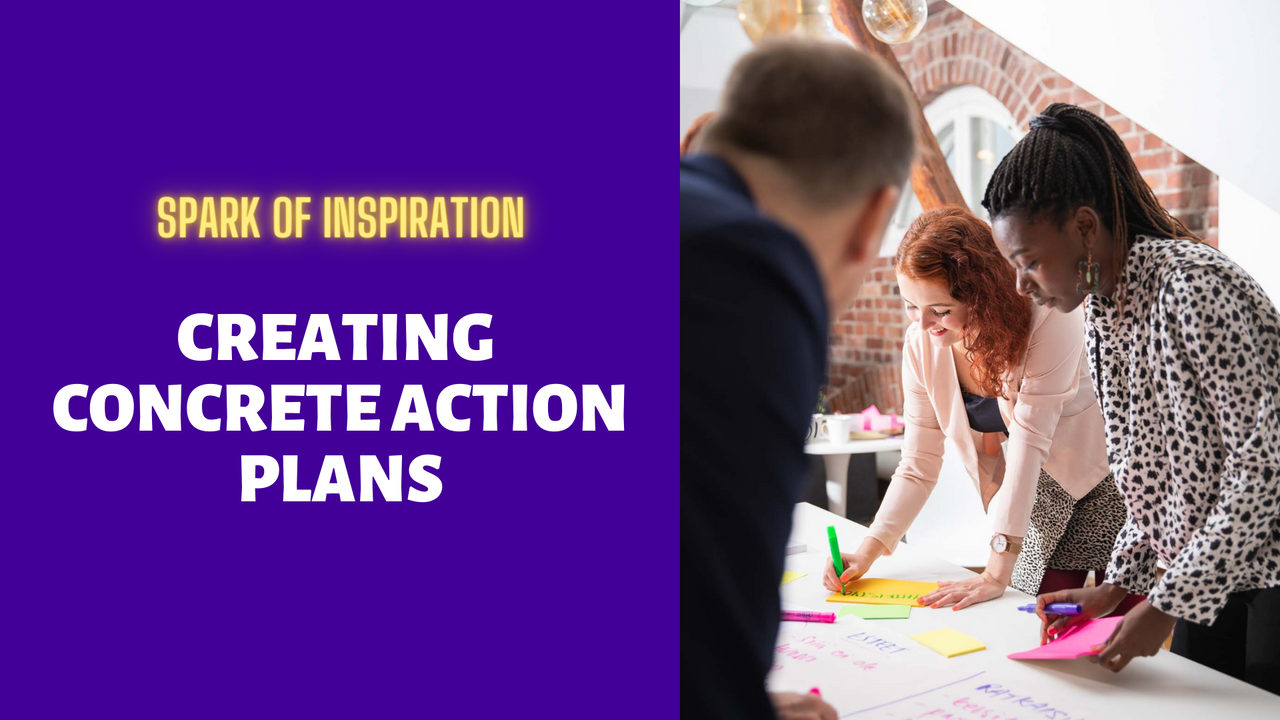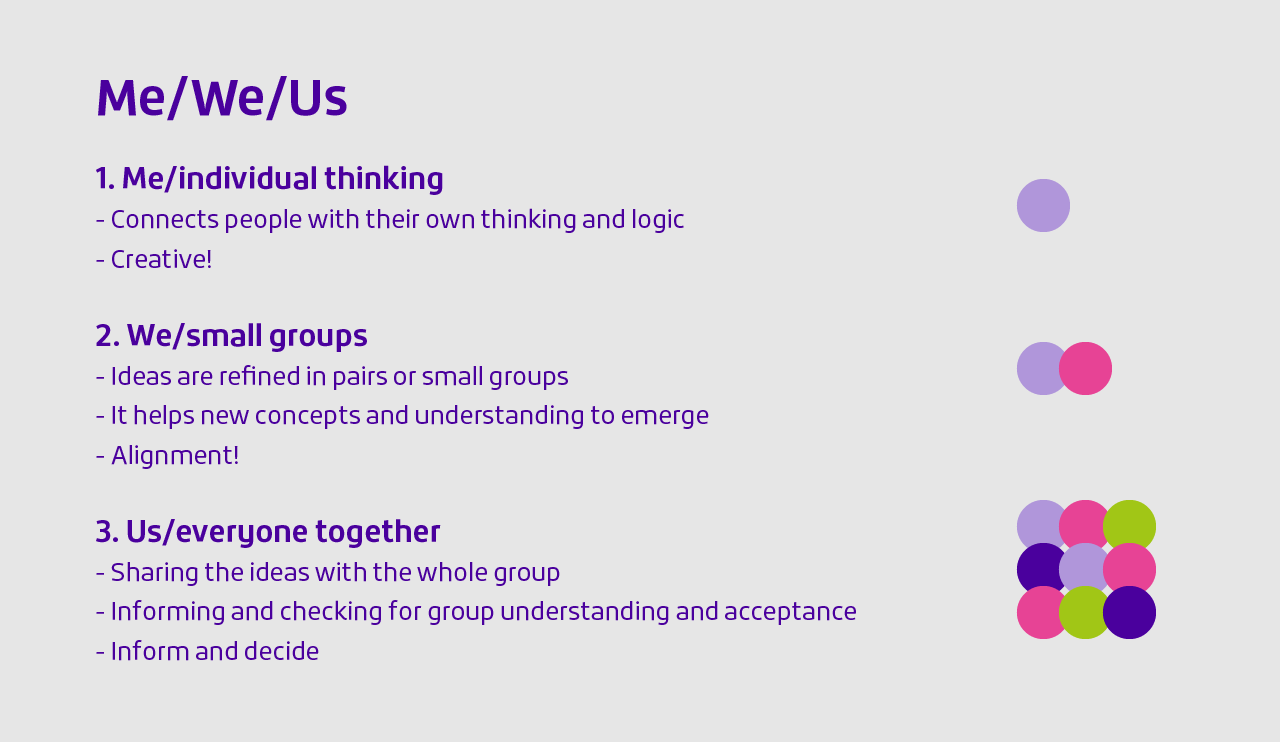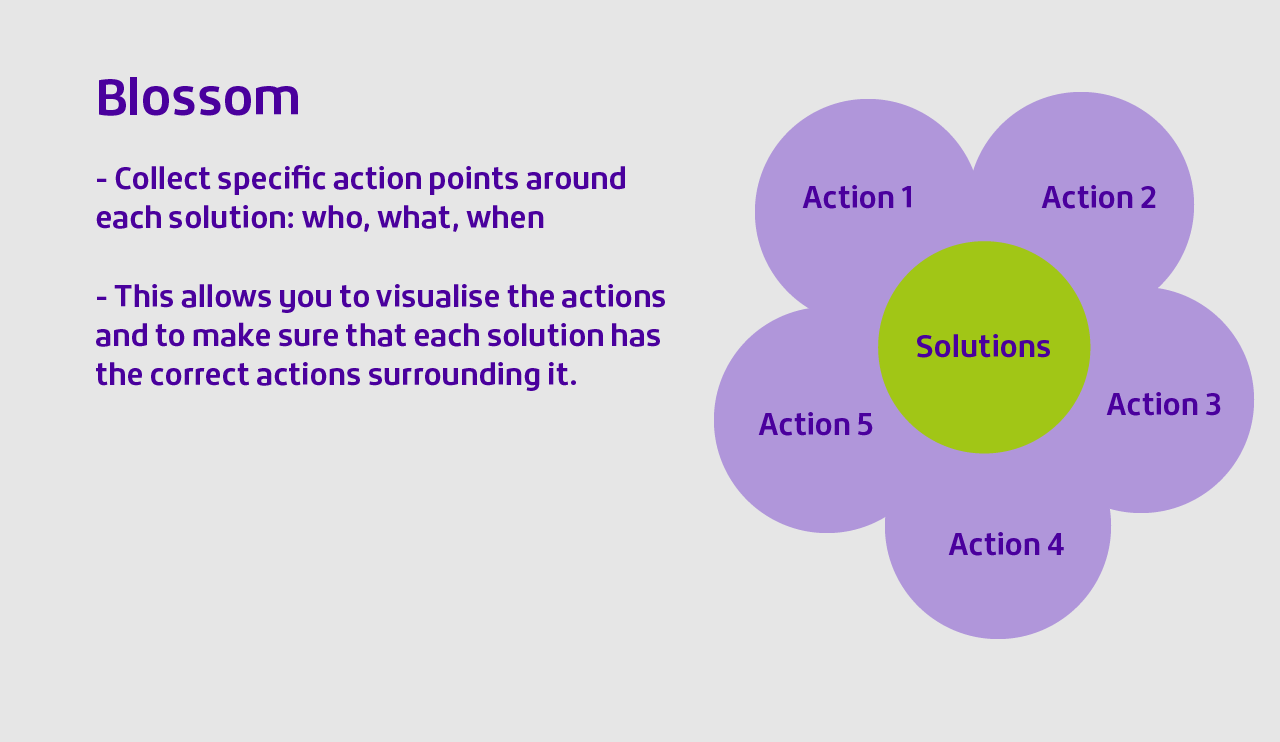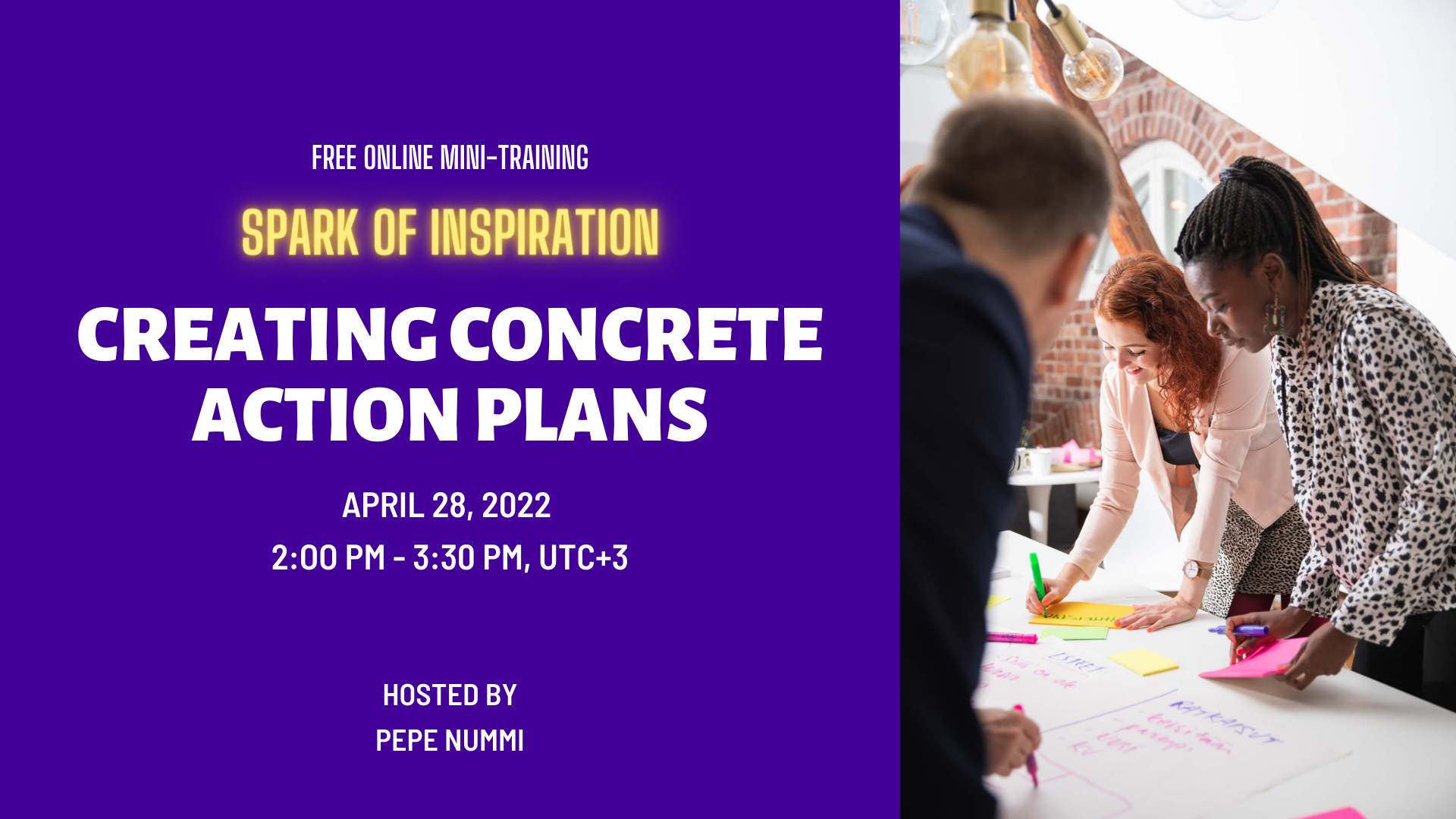Creating Concrete Action Plans

Please tell me if this sounds familiar. You’ve just sat through a long meeting where a lot of information was shared, and people made some big promises. All the participants seemed receptive and left the meeting feeling enthusiastic. But in the days and weeks that followed, nothing happened. In fact, no one did much of anything. Goals weren’t reached and promises faded away. The worst part about all of this? You might have to sit through the same meeting later to review the goals and commitments that never happened. History repeats itself; people get fed up, and time is wasted. A meeting’s content is only as good as the actions that come from it. In other words, time and energy are wasted if no one commits to actions following a meeting. In today’s Spark of Inspiration, I will touch on the Me/We/Us workshop structure that gives all participants the chance to fully develop ideas individually and refine them together with others. Then I will share with you a tool called Blossom that I use at the end of a workshop to get people to commit to actions.
Me/We/Us is a workshop structure that I firmly believe in. The idea behind the tool is to give time for different types of thinking; individual thinking (ME), working in small groups (WE), and lastly, everyone together as one large group (US). This progression gives people a chance to connect with their thoughts alone, then compare ideas and create new ones in small groups, and finally decide what ideas are best and accept them together as one group.

Me/We/Us does not fit only into a specific part of a workshop. You can use it in many different situations. I use it for emergent thinking, convergent thinking, and during all workshop stages. Me/We/Us helps people commit to actions because it allows people to understand the content and create ideas and actions with others. One huge obstacle that stands in the way of a person committing to something is not understanding the big picture. Me/We/Us creates understanding in 3 distinct stages and ends with an Us stage that brings the group together as one to review content.
One mistake I see people make with Me/We/Us is thinking that you need to divide time up equally between all three parts. Depending on the circumstances, this can be true sometimes, but I tend to give more time to the Us stage than other parts of Me/We/Us. People tend to work very constructively together in pairs or small groups, whereas in one big group, people tend to take positions and argue. In addition, pairs or small groups are the best format for creating new emergent ideas.
When I want to give a group a crystal-clear understanding of what they should do next, I use Blossom. To use the tool, write a solution on a piece of paper and display it for everyone to see. Then, have people develop actions that they should do to implement the solution. With Blossom, you should use the Me/We/Us format I discussed earlier.
Blossom is designed to explore multiple topics at once because Blossom requires that all actions link to a specific solution. For example, if a group comes up with eight solutions and each one has five actions created for it, there are 40 actions. Imagine a wall filled with 40 sticky notes. It would be a bit chaotic without some organisation, right? With Blossom, actions are placed around the solution that they are linked to, which clearly illustrates how everything fits together when looking at the big picture. There are also different timeframes for executing the actions. These essential details are accounted for by labelling each action with a defined who and when.

I know that time is a resource that always seems scarce when planning sessions and bringing individuals together for a meeting or workshop—and taking the time to record what people will do after the session is often an afterthought. But I hope you give a tool like Blossom a try. It’s a direct investment in the rest of the workshop that came before it, and Blossom helps folks remember the content long after the workshop has ended.
If you’d like to read more about creating action plans, you can check out my book, Handbook of Facilitative Leadership: Theory, Tools, and Design. As always, thanks for reading, and I hope that this content inspires you in your leadership journey.
If you wish to learn more about these topics,
check out our upcoming training >>
⭐ Learn more about Breakthrough Decision Making >> ⭐
About the trainer:
Pepe Nummi is a trailblazer of facilitation and an author in Finland. He is the first certified professional facilitator in the country and one of the founders of Grape People – Finland’s first company focusing on facilitation. Over the course of his long career, he has trained over 15,000 people in more than 20 different countries.
Get to know Pepe: LinkedIn | Twitter
Feel free to reach out in case you would like a tailored training
for your team or organization: [email protected].
We are more than happy to help you!




